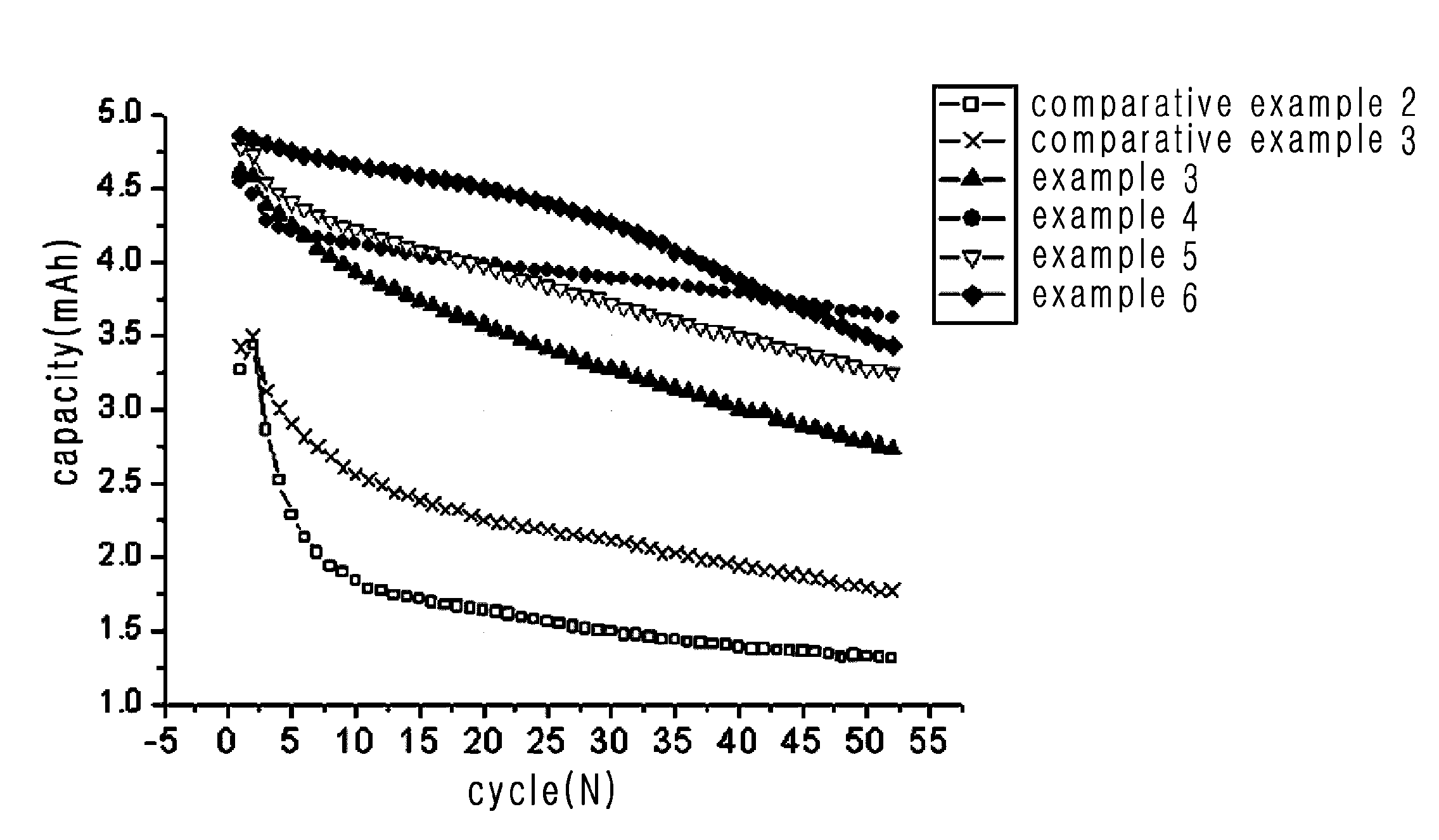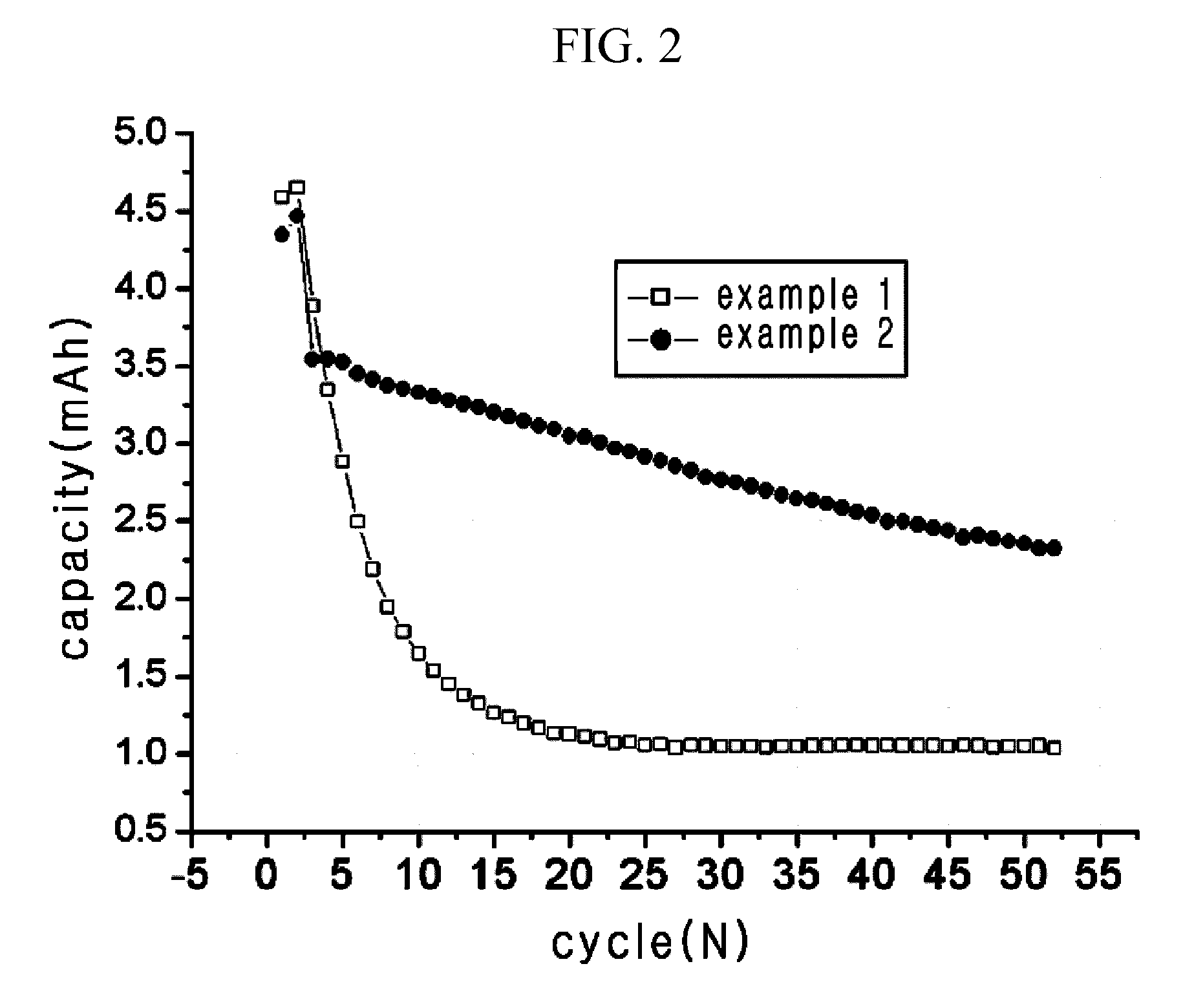Lithium secondary battery
a secondary battery and lithium battery technology, applied in the direction of cell components, conductors, cell component details, etc., can solve the problems of non-aqueous solvents that are easy to evaporate, the discharge or discharge of lithium secondary batteries becomes deteriorated or disabled, water leakage, etc., to improve the wettability of high-viscous non-aqueous, improve the safety, and reduce the amount of low-viscous solvents mixed with non-aqueous solvents
- Summary
- Abstract
- Description
- Claims
- Application Information
AI Technical Summary
Benefits of technology
Problems solved by technology
Method used
Image
Examples
example 1
Preparation of Separator
[0055]5 parts by weight of polyvinylidenefluoride-hexafluoropropylene copolymer and 5 parts by weight of cyanoethylpolyvinylalcohol were respectively added to acetone and dissolved at 50° C. for about 12 hours or more to prepare a binder polymer solution. The prepared polymer solution was added with Al2O3 powder so that a weight ratio of polymer mixture / Al2O3=10 / 90, and then Al2O3 powder was pulverized for 12 hours or more into an average diameter of 400 nm by means of ball milling and then dispersed to prepare slurry. The slurry prepared as above was applied to a polyethylene / polypropylene lamination film with a thickness of 16 μm by means of dip coating, and a coating thickness was controlled to be about 4 μm based on one surface of the film. Pore size in the porous coating layer formed on the film was about 0.5 μm, and porosity was 58%.
[0056]Preparation of Cell
[0057]The separator prepared as above was interposed between a cathode in which LiCoO2 and Li(Ni0...
example 2
[0058]A coin cell was made in the same way as the example 1, except that polyethyleneterephthalate non-woven fabric with a thickness of 12 μm was used instead of the polyethylene / polypropylene lamination film of the example 1 to form a porous coating layer of the separator. The non-woven fabric used herein was made of super fine yarns with an average thickness of about 3 μm, and pores with a longitudinal diameter of less than 70 μm were in excess of 50%.
example 3
[0059]A coin cell was made in the same way as the example 1, except that a non-aqueous electrolytic solution obtained by dissolving 1.5M of LiBF4 into a mixed solvent in which ethylene carbonate and γ-butyrolactone were mixed at a ratio of 2:3 (v / v, with a viscosity of 2.0 cP at 25° C.) was used instead of the non-aqueous electrolytic solution of the example 1.
PUM
| Property | Measurement | Unit |
|---|---|---|
| viscosity | aaaaa | aaaaa |
| diameter | aaaaa | aaaaa |
| dielectric constant | aaaaa | aaaaa |
Abstract
Description
Claims
Application Information
 Login to View More
Login to View More - R&D
- Intellectual Property
- Life Sciences
- Materials
- Tech Scout
- Unparalleled Data Quality
- Higher Quality Content
- 60% Fewer Hallucinations
Browse by: Latest US Patents, China's latest patents, Technical Efficacy Thesaurus, Application Domain, Technology Topic, Popular Technical Reports.
© 2025 PatSnap. All rights reserved.Legal|Privacy policy|Modern Slavery Act Transparency Statement|Sitemap|About US| Contact US: help@patsnap.com



